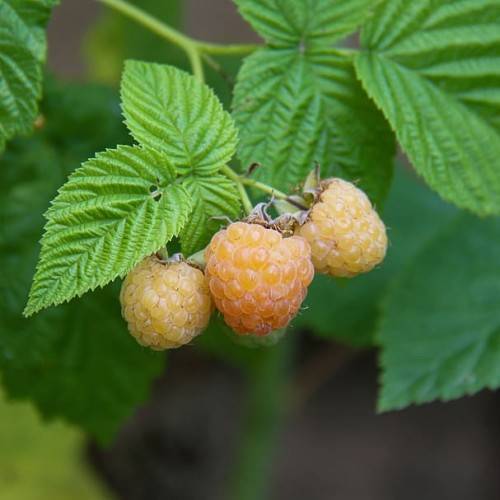
everbearing raspberry
Rubus idaeus 'Kiwigold'
Cycle:
Perennial
Watering:
Average
Hardiness Zone:
5 - 8
Flowers:
Flowers In Spring
Sun:
Full sun,part shade
Fruits:
Fruits Ready In Summer
Edible:
Yes
Leaf:
Yes
Growth Rate:
High
Maintenance:
Moderate
watering
Everbearing raspberry (Rubus idaeus 'Kiwigold') should be watered frequenty and evenly during the active growing season. Water the plant when the top 2 inches of soil is dry, however avoid allowing the soil to dry out completely. Water the raspberry bushes 1 to 2 times a week, depending on soil type and the amount of rainfall. In the hot, dry summer months, water more frequently — 3 or 4 times a week — and make sure to saturate the root zone. During the cooler winter months, reduce watering frequency.
sunlight
Everbearing raspberry (Rubus idaeus 'Kiwigold') plants thrive in areas that are exposed to full sun for 6 to 8 hours per day. This will provide the best environment for flowering and fruiting. Placing this variety of raspberry bush in a location that receives early morning sunlight followed by partial light in the afternoon will also provide the necessary light for the plant to produce high yields and healthy canes. When the raspberry bush is planted in an area that does not receive adequate sunlight, the canes may be shorter than usual with fewer blooms and poor yields of fruit.
pruning
For Rubus idaeus 'Kiwigold' everbearing raspberries, pruning should be done in late winter, usually during the months of February and March, before the plants break dormancy. In late winter, before any new growth appears, the previous season's canes should be cut to the ground. This will produce a strong and healthy new crop of canes, which is the longest-living and most productive part of the plant. For longer-term productivity, it is helpful to remove any weak or diseased canes, as well as any canes that exceed 4.5 feet in height. All dormant canes should be cut to soil level, leaving the new canes that form in the warm weather following pruning. To keep the cane width under control, it is recommended to prune the ends of long canes in late winter or early spring when the buds are visible. Using these pruning techniques can help your everbearing raspberry plant to remain healthy and productive over many harvests.
